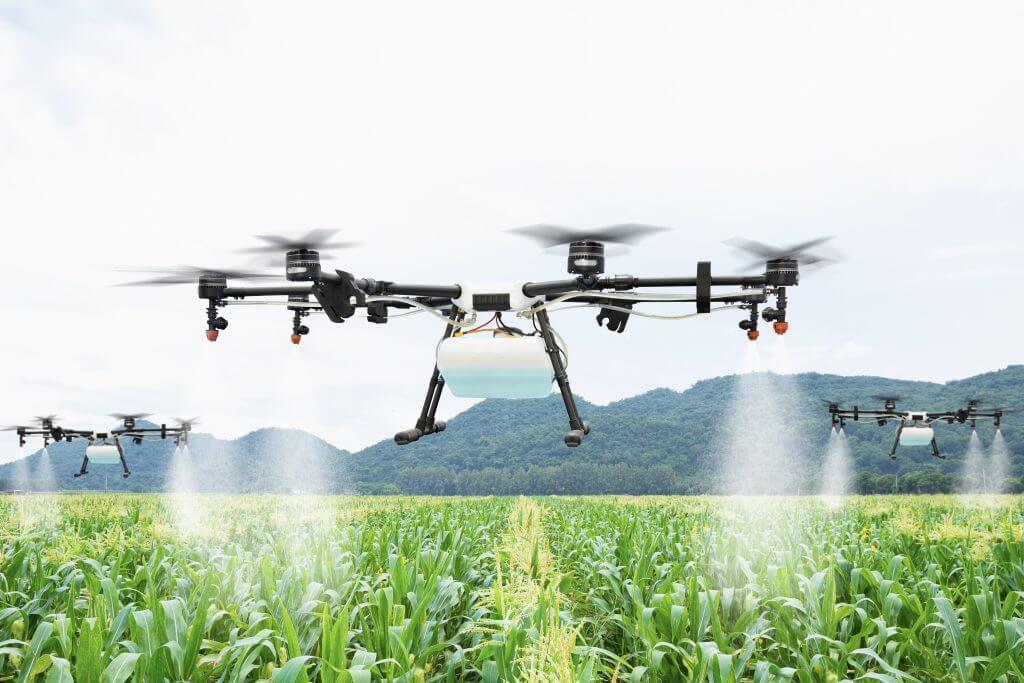The rise of drones in agriculture is changing everything, from how farmers map fields to how they spray crops. And leading the charge are advanced agricultural drones like the DJI Agras T50 and T40, capable of precise, high-volume aerial application.
But as the technology improves, the risks grow too. And whether you’re a first-time operator or launching a full-scale ag drone service business, there’s one thing you can’t ignore:
Insurance isn’t optional.
It’s required. It’s smart. And in many cases, it’s what gets you in the door with clients.
In this guide, we’ll walk through what makes agricultural drone insurance unique, what coverages you need, what FAA approvals are required, and how to get the right policy fast.
Why Agricultural Drone Insurance Is Different
Agricultural drone work brings with it two big risk categories:
- Spraying liability (because you’re dispersing chemicals over land)
- High equipment value (most spraying drones cost $20,000 to $35,000 or more)
That’s very different from someone flying a $1,500 DJI Mini for real estate photography.
If your drone damages crops, over-applies herbicide, or malfunctions mid-flight, the liability can fall squarely on you.
That’s why general liability insurance alone is not enough.
What Coverages Do You Need?
Let’s break it down:
1. Part 137 Liability Coverage
If you’re spraying anything (fertilizers, herbicides, pesticides, fungicides), you’ll need:
- FAA Part 137 certification
- Insurance specifically covering aerial application
Not all carriers offer this. BWI works with select underwriters who provide this niche coverage.
2. Hull Insurance
Your DJI Agras or similar drone likely costs $25K-$35K. Hull coverage protects you if the drone:
- Crashes
- Tips on landing
- Gets stolen
- Is damaged by weather or transit
Most policies include a 5% to 10% deductible.
3. General Liability
This protects you from:
- Property damage
- Bodily injury to third parties
- Legal defense costs if sued
$1M is the standard starting point, but higher limits may be required depending on your contracts.
4. Non-Owned or Payload Liability
If you’re spraying with client-owned tanks or sensors, or carrying high-value liquid payloads, you may need special add-ons.
FAA Certifications You Must Have Before Getting Insured
Underwriters will not quote serious agricultural drone operations without the following:
- FAA Part 137 Certification (for any spraying activity)
- Section 44807 Waiver (for drones over 55 lbs)
- UAS Registration for all aircraft being covered
- Qualified Pilot-in-Command with training logs and experience
Optional waivers like BVLOS or flying over people aren’t always required for ag use but can increase credibility.
If you don’t yet have Part 137, we can still help you with liability-only quotes until your cert is active.
Real-World Case Study: DJI Agras T50 Startup in Texas
Earlier this year, we worked with a drone entrepreneur launching a precision spraying business in central Texas.
He had the equipment. FAA licenses. And signed contracts with several farms for early season herbicide application.
But he couldn’t start.
Why? He lacked the proper coverage.
We helped him:
- Get a hull and liability policy for a $31,000 DJI Agras T50
- Add aerial application endorsement
- Meet landowner coverage requirements
- Secure his policy and proof of insurance in 48 hours
That policy didn’t just protect his drone. It let him legally launch his business.
Why Insurance Opens Doors in Agriculture
We hear this from ag drone clients constantly:
“We couldn’t even bid on the job without proof of insurance.”
Here’s why your drone insurance is more than protection:
- It gives confidence to landowners and growers
- It satisfies the requirements of chemical companies
- It meets contractual thresholds for co-ops and corporate farms
- It shows professionalism and readiness to scale
Insurance isn’t a formality. It’s often your ticket to credibility in agriculture.
How to Get the Right Policy Quickly
At BWI, we specialize in fast-turnaround drone insurance for agriculture. Here’s how to get started:
- Gather Info:
- FAA certs and waivers (Part 137, 44807)
- Drone make, model, and serial number
- Business name and location
- Submit to BWI:
- We quote across multiple underwriters
- We review your operation and exposures
- Get Proof Fast:
- Same-day or 24–48 hour turnaround in most cases
- Digital bind confirmations and certificates available immediately
Final Thoughts: Fly Smart. Protect Your Business.
Drones are the future of agriculture. But smart operators know that success takes more than equipment and ambition.
It takes protection.
If you’re flying drones for agricultural spraying, whether you’re a solo operator or running a fleet, make sure your coverage is built for the real risks you face.
Let us help you get the right drone insurance policy, so you can fly legally, grow your business, and land the jobs that matter.
[Request a Quote for Ag Drone Insurance from BWI Today]
Continue Reading



